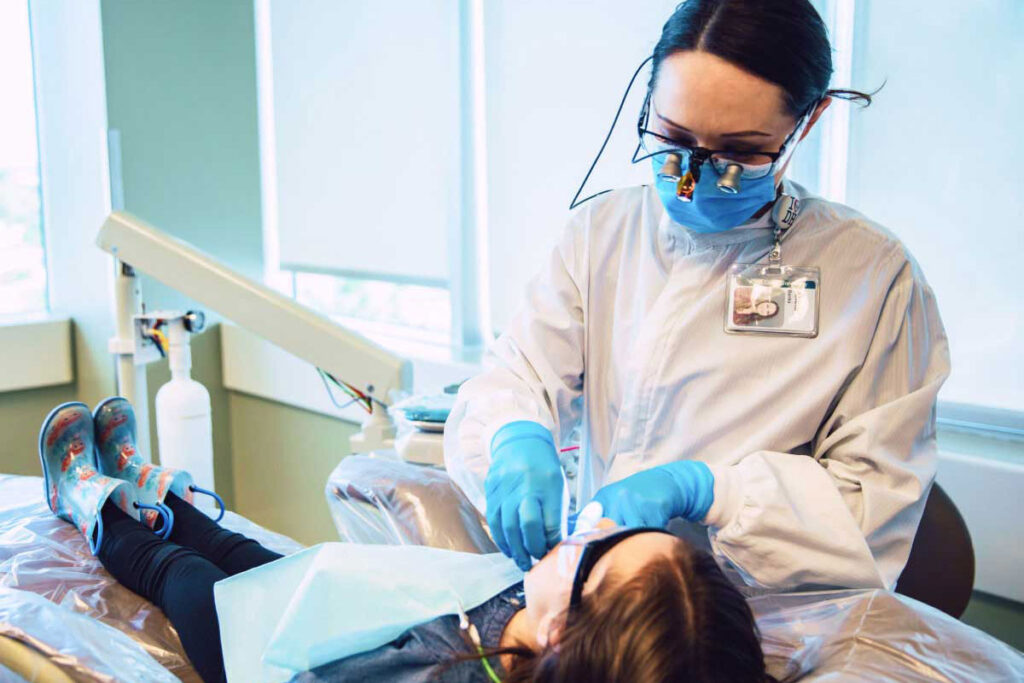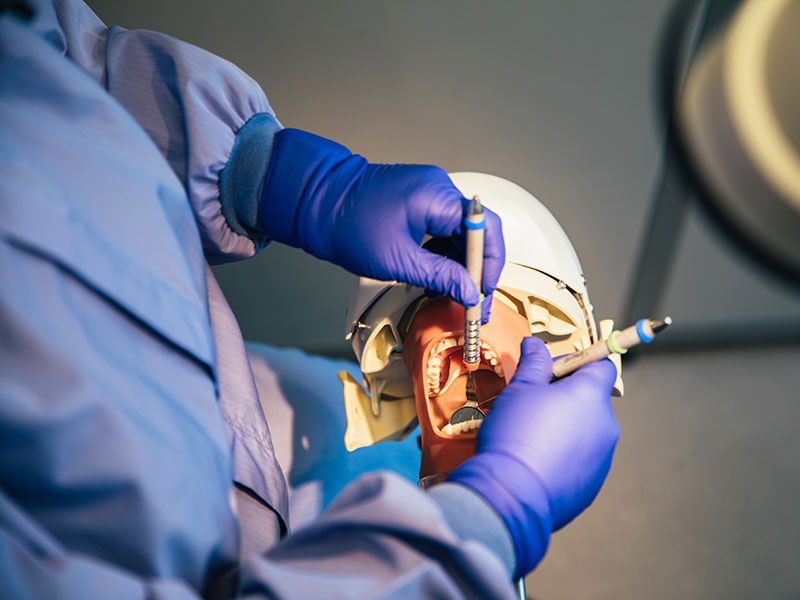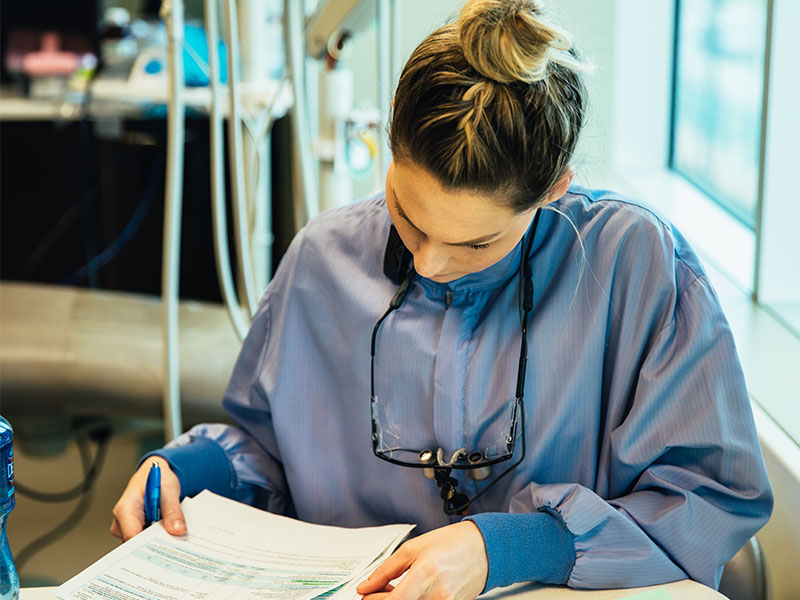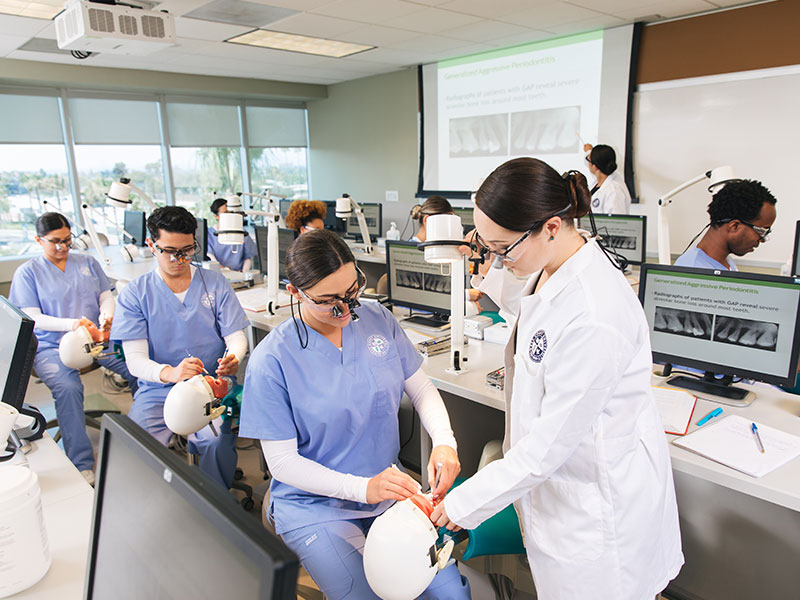How to Become a Dental Hygienist in California


Dental hygienists play an important role in helping patients maintain optimal oral health. From performing preventive and therapeutic treatments to explaining the best brushing and flossing techniques to helping patients understand disease prevention, dental hygienists have a broad scope of practice that support patients throughout their dental healthcare journey.
If you’re thinking of pursuing a dental hygiene career in California, you will need to take certain steps so you can obtain your registered dental hygienist (RDH) license and start working in the field. Review the steps in this career guide to learn what it takes to become an RDH so you can begin positively impacting the lives of patients.
Graduate from an Accredited Dental Hygiene Program
To become licensed as an RDH in California, you will need to first graduate from an accredited and board-approved dental hygiene program.
While you only need a minimum of an associate degree in dental hygiene to qualify for licensure, many people choose to earn their bachelor’s degree for a more comprehensive education and to open the door to more career opportunities. An associate degree typically takes two years to complete and a bachelor’s degree typically takes four years, though there are programs that make it possible for students to graduate in less time.
West Coast University’s Bachelor of Science in Dental Hygiene (BSDH) program allows you to earn your bachelor’s degree in as little as 34 months. The program gives students opportunities to gain hands-on practice that can help them prepare for a career as a dental hygienist. Each student gets their own dedicated simulation unit, dental chair, and radiology equipment for the duration of class, and they can also gain real-life experience while giving back to the community at the WCU Dental Hygiene Clinic.
Pass the National Board Dental Hygiene Examination

The National Board Dental Hygiene Examination (NBDHE) assesses the test taker’s understanding of the basic biomedical and dental hygiene sciences as well as their ability to apply this knowledge and skills in a problem-solving context.
The exam consists of:
- A discipline-based component (200 items), broken down by content focused on:
- The scientific basis for dental hygiene practice (61 items)
- The provision of clinical dental hygiene services (115 items)
- Community health research principles (24 items)
- A case-based component (150 items)
For further breakdown of the exam content, see the NBDHE candidate guide.
To take the exam, you must ensure you meet the eligibility requirements and then submit an application to the Joint Commission on National Dental Examinations (JCNDE). You will need to either have your program director confirm your eligibility or submit proof that you graduated from the program. Learn more about how to apply for the NBDHE and schedule your exam.
Pass State Exams and Obtain Certifications
In addition to passing the NBDHE, you will also need to:
- Pass the California Law and Ethics Examination
- If you did not graduate from a California dental hygiene program, you must pass the dental hygiene board-approved clinical examination
- If you did not graduate from a California dental hygiene program, you must complete approved courses in the administration of local anesthesia, soft tissue curettage, and nitrous oxide, if you want to expand your professional duties
Note that California graduates are no longer required to pass a clinical licensing exam.

Apply for Your California RDH License

Once you have taken the necessary exam, the next step will be to submit an application for RDH licensure to the Dental Hygiene Board of California. You can submit your application online through www.breeze.ca.gov (which is encouraged) or mail in a paper application. The Board has up to 90 days to review the initial application.
In addition to filling out your application, you will need to submit:
- An application fee
- A letter from your dental hygiene program director or a copy of your diploma or graduation certificate
- Proof of your NBDHE score
- Your clinical examination score report (if applicable)
- A copy of your completed live scan form or fingerprints hard card.
- A color passport photograph taken within the last six months
You may also need to provide additional documentation if you have special circumstances, such as completion of education that will allow you to perform additional duties, completion of remedial education, past issuance of a professional or vocational license in another state, a military background, etc.
See the full application checklist for those seeking California RDH licensure by clinical exam.
Tap Into Your Network and Secure Your First Job

Once you are licensed as a California, it’s time to secure your first job as an RDH. Make sure to tap into the connections you made and any dental hygiene career resources you gained access to through your RDH program.
If you went to a school like WCU, you should still have the support of your school’s career services team, which can help with everything from interview preparation to help understanding the licensing process to finding job opportunities and more. Find out what dental hygiene career resources are available for WCU students.
Get Started on Your Education
There’s no time like the present to go after what you want. Get started with a dental hygiene program that is designed to prepare you for the fast-paced environment for a dental office.
Learn more about the BSDH program at WCU.
Request Info
- Flexible online and campus programs
- 65,000 alumni across the globe
- Experienced faculty and staff